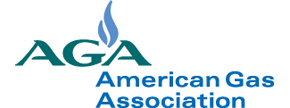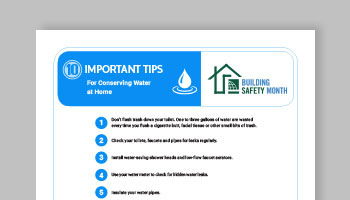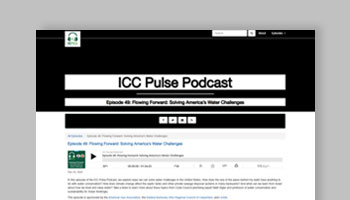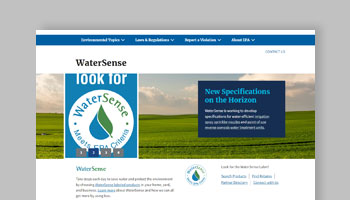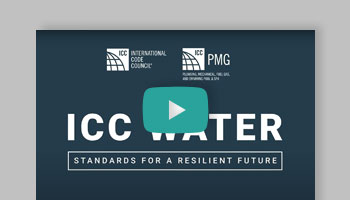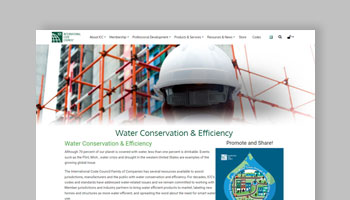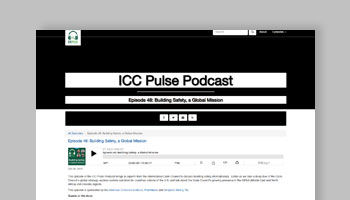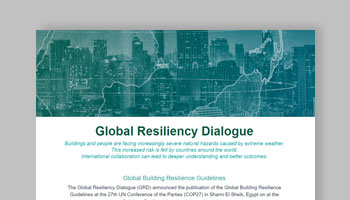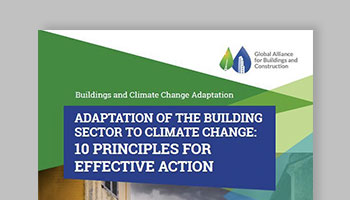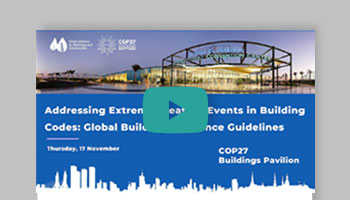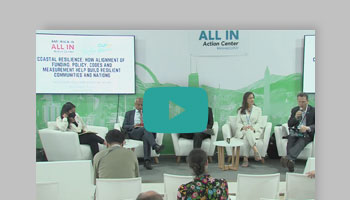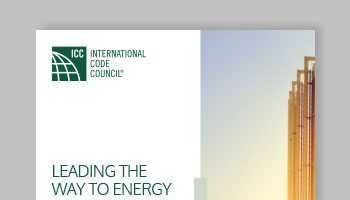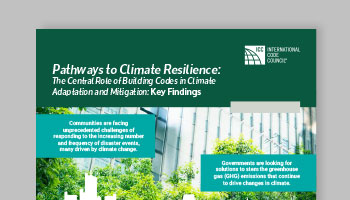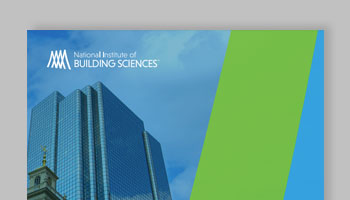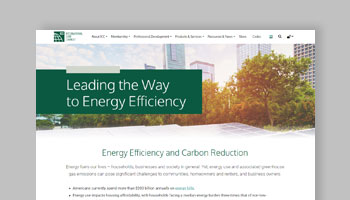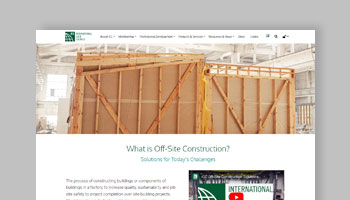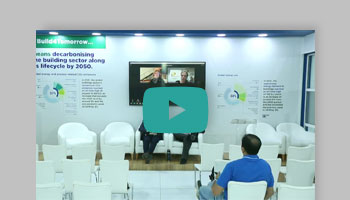
Week 5 elevates Building Safety Month to a global scale and addresses some of the issues that we face as a global community including extreme weather events and water scarcity.
Global Water Scarcity

Clean water is the world’s most precious commodity, and public health depends on safe and readily available water. The World Health Organization estimates over two billion people live in water-stressed countries, which is expected to worsen in some regions due to a changing climate and population growth. Water conservation and efficiency issues have become crucial conversations amongst building safety professionals in recent years. The building industry looks to increase water efficiency through innovative practices and technologies not just domestically, but worldwide. Here are some examples of countries in water-scarce areas that are innovating:
- Saudi Arabia boasts the highest production of desalinated water worldwide (removes salt out of water from the Red Sea and Arabian Gulf) and are in the process of converting their desalination plants to solar.
- Israel is leading the world through their policies, practices and technologies for its water resources and conservation, most notably through reclaiming over 80 percent of its wastewater and stormwater for agricultural operation.
- Cape Town, South Africa, is incorporating automated domestic water metering installations to set a target water usage for each resident per day, leveraging alternative water sources and is updating their supply network infrastructure.
- The United Kingdom is cutting water use through water metering, incentives for water-saving technologies, hosepipe bans and investing in updating the country's water supply equipment.
- The 2000s drought in Australia (also known as the "Millennium drought") compelled a coordinated response on water conservation. Changes were added to the Plumbing Code of Australia (PCA) that regulated stricter water flow rates on household appliances, the Water Efficiency Labelling Scheme for products covered by the scope of the PCA (including washing machines and dishwashers) was introduced and using water for irrigating gardens and washing cars was banned.
Building Resiliency Solutions
Around the World

Communities worldwide are experiencing an increase in disaster events that are significantly impacting their societies, economies and cultures. Here are a few resiliency success stories that we can all learn from:
- Copenhagen, Denmark is combatting flooding in one neighborhood by replacing asphalt with innovative tiles that allow rainwater to seep back into groundwater aquifers.
- After severe earthquakes in 2011 and 2016, New Zealand has incorporated base isolation systems that allow a building's foundation to move horizontally to dissipate seismic forces.
- The Netherlands have addressed their vulnerability to flooding by creating a "Room for the River" program that creates diversions, restores riverine landscapes and removes silt to combat river floods.
- Białystok, Poland has built green bus stops designed to withstand intense rainfall, strong winds, drought and heat waves. They feature vegetation on the roof and walls and can retain up to 250 liters of rainfall.
- Canada's Zibi waterfront city is a 34-acre master-planned community that relies on post-industrial waste energy for heating and the Ottawa River for cooling, and the urban design prevents local flooding.
Modern Building Codes Support Sustainability

Globally, buildings and building construction sectors combined are responsible for over one-third of global final energy consumption and nearly 40 percent of total direct and indirect CO2 emissions. Modern building codes are at the core of conversations on increased energy efficiency and the reduction of greenhouse gas emissions. Here are a few ways that building codes and sustainability intersect:
- The European Commission has been aggressive over the past 15 years improving the energy efficiency of new buildings in member countries, and satisfying net-zero emission building code requirements. This has been achieved through a series of building directives that promote policies that help:
- achieve a highly energy efficient and decarbonised building stock by 2050
- create a stable environment for investment decisions
- enable consumers and businesses to make more informed choices to save energy and money
- Since 2005 the National Construction Code (NCC) in Australia has seen incremental increases in the stringency for greenhouse gas emissions and energy savings in all classes of buildings. These changes have been introduced in accordance with a Trajectory for Low Emission Buildings – the end point of which is net-zero ready buildings.
- Dubai Municipality issued the second edition of the Al-Sa'fat system in early 2023, which aims to include a set of mandatory requirements for all new buildings to obtain the Silver Sa’fa as an official green building rating system (replacing the existing green building code). The update would help streamline the process of reducing energy, water and material consumption, and enhance design and construction related activities for efficient building operations.
- As green building councils around the world are increasing focus on embodied carbon in buildings, expect to see a growing need for Environmental Product Declarations for all building products. An EPD is a comprehensive disclosure of a product's environmental impacts based on a Life Cycle Assessment (LCA) based on the ISO 14025 standard. Learn more about the ICC-ES EPD program here.
- The International Code Council and ASHRAE are developing a joint greenhouse gas (GHG) evaluation standard (ASHRAE/ICC Standard 240P) to provide a methodology to quantify and document GHG emissions associated with buildings, building systems and equipment over their life cycle.
The Code Council in Action

- Codes at the Core: Pathways to Climate Resilience (International Code Council @ COP)
- ICC Global Membership Council
- Global Resiliency Dialogue Second Survey of Building Code Stakeholders - Australia Delivering Climate Responsive Resilient Building Codes and Standards
- Electric Vehicles and Building Codes: A Strategy for Greenhouse Gas Reductions
- Exchanging Lessons on Off-Site Construction
- IBQC Sparks Global Dialogue on the Performance of Building Products
- International Code Council joins the Global Alliance for Building and Construction
- The International Code Council Joins Delegation to Israel to Discuss Water Conservation Policies and Research
- White House to Address Climate Priorities Through Energy Code Implementation
- The International Code Council Signs a Memorandum of Understanding with Dubai Municipality to Foster Safe and Innovative Construction Practices in the MENA Region
- An Engineer’s Account of Assisting in Relief Efforts Following the 2023 Turkey Earthquake
- The International Code Council Signs a Memorandum of Understanding with Dubai Municipality to Foster Safe and Innovative Construction Practices in the MENA Region
Spread the Word



